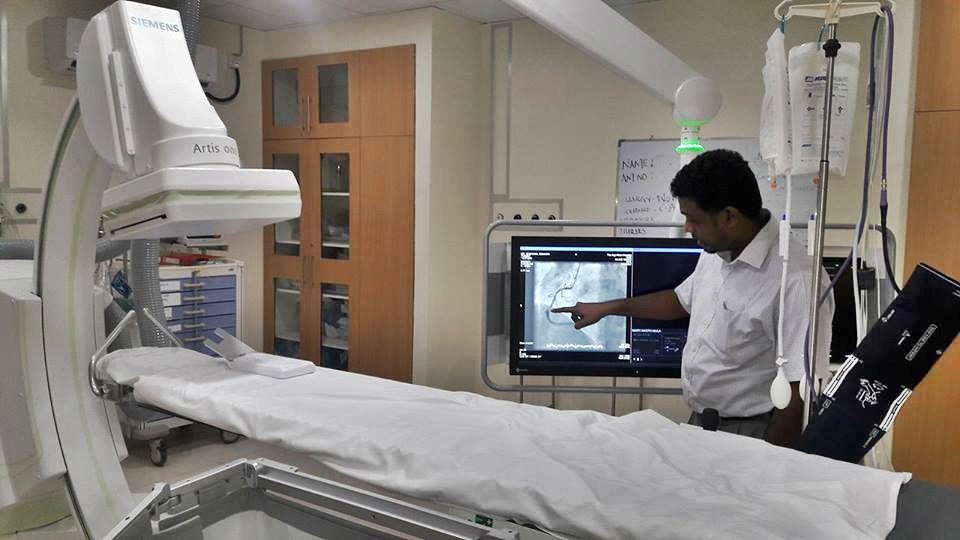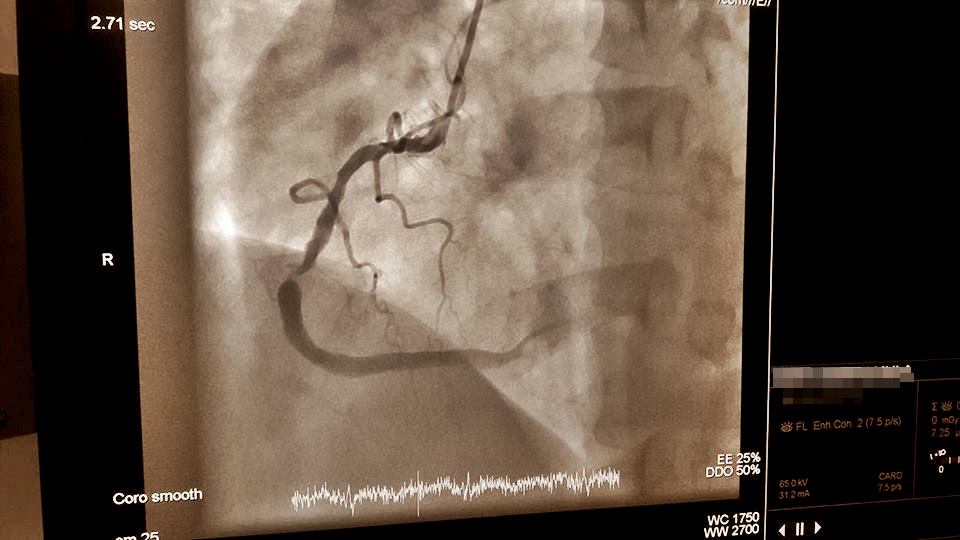
Mombasa, KENYA: Coast residents with heart related complications can now get help from the latest technology in the treatment of cardiac complications without having to travel outside the region.
This comes after a new catheterization laboratory, also known as a cath lab, that can offer more than 20 heart-related services and has the capacity to handle 15 patients with cardiac problems per day, opened it’s doors at the Aga Khan hospital, Mombasa.
The boost by the cardiac programme by the National Hospital Insurance Fund (NHIF) has also helped alot of patients in getting healthcare in time, saving a lot of lives.
According to NHIF CEO Geoffrey Mwangi speaking during the NHIF@50 Cardiac Conference held at a Nairobi in June, the number of cardiac patients on the treatment waiting list has decreased by 262 since the inception mid last year.
Initially, it would cost over a million shillings to treat heart diseases but the cost has been cut to about Sh.500,000 under the NHIF benefits package.
According to Dr. Mohammed Salim,a cardiologist at the hospital, ever since it was launched on 9th June 2017, the cath lab has been very useful to Mombasa residents who develop heart complications and could not access immediate help earlier.
“Patients with heart related complications have been travelling all the way to Nairobi to access a cathlab all we could do was administering arterial plaque dissolving drugs so as to reduce the risk of cardiovascular disease,” Dr. Salim said.
Dr. Salim defines a cath lab as an examination room in a hospital with diagnostic imaging equipment that is used to visualize the arteries of the heart and the chambers of the heart and treat any abnormality found.
He adds that the imaging equipment consists of a single X-ray generator source and an x-ray image intensifier for fluoroscopic imaging and a number of procedures can be done such as Coronary Angiogram. This a a special X-ray test done to find out if one’s coronary arteries are blocked or narrowed, where and by how much and there after a Coronary Angioplasty may be done.
“In Coronary Angiolasty, which is a therapeutic procedure to treat narrowed coronary arteries; a deflated balloon attached to a catheter is passed over a guide-wire into the narrowed vessel and then inflated to a fixed size. The balloon forces expansion of the blood vessel and the surrounding muscular wall, allowing an improved blood flow.” Says Dr. Salim.
Patients requiring further evaluation for heart failure, valvular heart diseases and pulmonary hypertension are also assisted, as will those with inferior vena cava filter placement problems.

Coronary Angioplasty
The procedure lasts between 30 minutes to three hours. Once a patient is admitted, the heart is monitored and the patient is given an intravenous sedative to relax the body.
“A needle is inserted through the wrist into the radial artery; a wire is then passed through the needle and is guided through the arterial system up to the heart. A flexible catheter (thin tube) is slipped over the wire and threaded up to the heart, this is monitored using a continuous x ray device called fluoroscope.” Explains Dr. Salim.
“At this point the wire is removed and the tip of catheter is positioned to enter the coronary artery; a special dye is injected which allows the x-ray images of the arterial interior and help in identifying the position of the block. Once identified, a flexible wire is inserted into the artery vessel followed by a balloon tip catheter over this wire to position itself at the site of the blockage, rapid inflation and deflation of the small balloon pushes the vessel out re-establishing the flow of blood in the artery, the deflated balloon is then withdrawn.” Adds Dr. Salim.
In most cases, patients are able to return to work within 1 to 2 weeks after the procedure. However, If one had a heart attack, the recovery may be longer. Dr. Salim, however advises that the doctor will provide specific guidelines about returning to work.
A short video showing the inflation and deflation during Coronary Angioplasty:
Also, Devices such as pacemakers may be fitted in the cathlab, or rotablation to remove plaque can also be performed.
According to Dr. Salim, Plaque is a substance made up of fat, cholesterol and calcium that builds up in the coronary arteries that supply the heart with oxygen-rich blood, A buildup of plaque increases risk of atherosclerosis; a condition characterized by narrow arteries, blood clots and restricted blood flow that could lead to a heart attack and death.
Heart related diseases and deaths in Kenya
According to Dr. Swaleh Breikmish, Director of Cardiology at Aga Khan hospital Mombasa, there are many heart diseases; those that affect the heart vessels that are refereed to as Coronary artery diseases that cause heart attacks, others affect the rhythmic activity of the heart and others affect the vessels making them weak, that end up causing heart failure.
Also, there are diseases that affect other parts of the body but end up affecting the heart.
“Infections such as influenza viruses can affect the heart and cause viral myocarditis and the heart is affected.” He adds.
According to Dr. Swaleh rheumatic heart diseases are also very common at the Coast and are usually caused by a certain kind of sore throat.
“Rheumatic heart disease causes a permanent damage to heart valves is caused by rheumatic fever. The heart valve is damaged by a disease process that generally begins with a sore throat caused by bacteria called Streptococcus, and may eventually cause rheumatic fever.” Says Dr. Sawaleh.
According to health experts, only about three people out of every 10 who have a sore throat infection that is left untreated develop rheumatic fever, with the signs of rheumatic fever usually appearing about five weeks after the sore throat infection.
Dr. Swaleh says the condition usually appears in children between the ages of 5 and 15, even though older children and adults have been known to contract the fever as well.
Heart diseases can also be divided in two; congenital and acquired.
“In congenital, these are heart conditions people are born with such as a hole in the heart or with only two chambers of the heart, while acquired comes from conditions such as Rheumatic diseases,” Says Dr. Swaleh.
Dr. Swaleh adds that up to now it is not known what causes congenital heart problems, however there are theories that they can be genetic or when a mother gives birth when she is above 45 years.
Coronary heart diseases have been ranked the sixth most cause of deaths in Kenya and according to the latest WHO data published in may 2014, Coronary Heart Disease Deaths in Kenya reached 9,163 or 2.74% of total deaths.
Health experts say that cardiovascular issues such as heart attacks are the number one cause of death in adults over 30.
However, the trend of the disease is fast shifting more young people are being diagnosed with heart conditions, this is according to the cardiologists at the Aga Khan hospital in Mombasa.
According to Dr. Salim patients are not aware of simple symptoms of heart attack and end up coming to hospital too late exposing them to worse effects of the condition.
“If it does not kill you, you will end up with a weak heart which requires seven to eight types of medications to manage, it is important to seek medical help when you experience severe chest pains.” Says Dr. Salim.
At least 60 per cent of patients who go to hospital with heart attacks are between 20 and 30.












